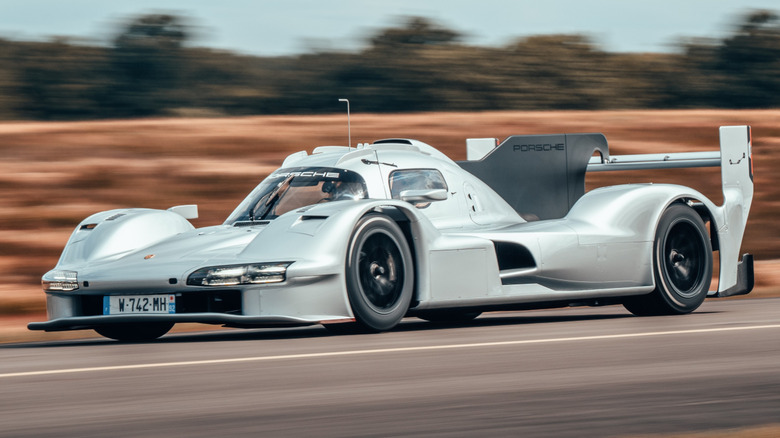
From its roots in post-War Germany to its current status as one of the world's leading performance car manufacturers, Porsche has evolved considerably over the decades. While its iconic 911 model has remained in production for the majority of the company's existence, other models have come and gone, with their success dictated partly by ever-changing buyer tastes. Models like the Cayenne and Macan have proved to be major financial successes in recent years, helping the company keep its cashflow steady
and giving it the ability to continue investing in its less mainstream models.
While both of those SUVs play an important role in the company's portfolio, they're not exactly the best looking Porsches ever designed, and they aren't the most interesting to enthusiasts either. Instead, most enthusiasts are drawn to the brand through its rarer, motorsport-linked models, some of which have only ever been produced in double-digit or even single-digit numbers. Those limited-run Porsches also often command the highest prices among collectors, with many of the most expensive Porsches ever sold also being among the rarest. A significant number of the priciest Porsches are race cars, but not all of its rare, coveted cars are limited to the track. These five are among the brand's rarest cars ever built, and they all qualify for a licence plate.
Read more: 5 Limited Edition Firebirds Every Pontiac Fan Should Know About
Porsche 911 GT1 Strassenversion

The GT1 sports car category of the '90s is responsible for producing a number of intense homologation specials, including the Porsche 911 GT1 Strassenversion. Only 21 examples of the car were built, with the goal of homologating Porsche's 911 GT1 Evolution race car in time for the 1997 running of the 24 Hours of Le Mans. At the heart of the car sat a 3.2-liter six-cylinder engine, the same one that could also be found in the Le Mans car, albeit slightly detuned for road use. Still, with 537 hp on tap, the 911 GT1 Strassenversion was one of the most powerful road cars of its day.
The car's styling is a mix of two other Porsche models, the regular roadgoing 911 and the 962 race car. As such, it was instantly recognizable as a 911 from the front — particularly with its distinctive "fried egg" headlights that were shared with the then-freshly unveiled 996 — but the rear looked very different. The combination of race car looks, rarity, and near-competition levels of performance has ensured that the 911 GT1 Strassenversion remains a very highly sought after collectors' car today, and it commands seven figure sums at auction.
Porsche 550 Spyder
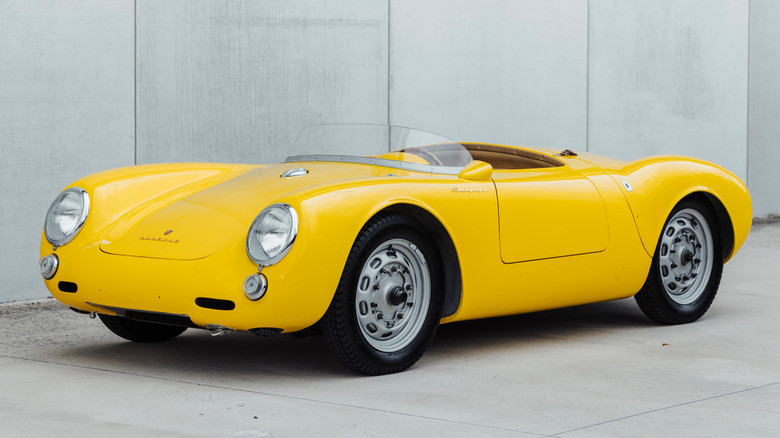
The Porsche 550 Spyder helped establish the brand as a force to be reckoned with in the early days of its foray into motorsports, but it's also one of the rarest Porsches ever built, with just 90 examples leading the factory. Although the "RS", or Rennsport, models, were built specifically for racing, they still had to be registered for road use. That's because some of the most prestigious races of the era — such as the Mille Miglia — were run on public roads. The 550 RS Spyder proved to be a big success for Porsche, and today is considered one of the most iconic cars in the brand's racing history.
That iconic status has meant that buyers are willing to pay huge sums for the car on the rare occasion that one appears for sale. The example pictured here was sold at a Bonhams auction in 2024 and fetched 2.53 million euros, or around $2.78 million at the time. Other examples have previously sold for even more, with the priciest 550 Spyder to appear at a public auction selling for over $5 million.
Porsche 911 R '67
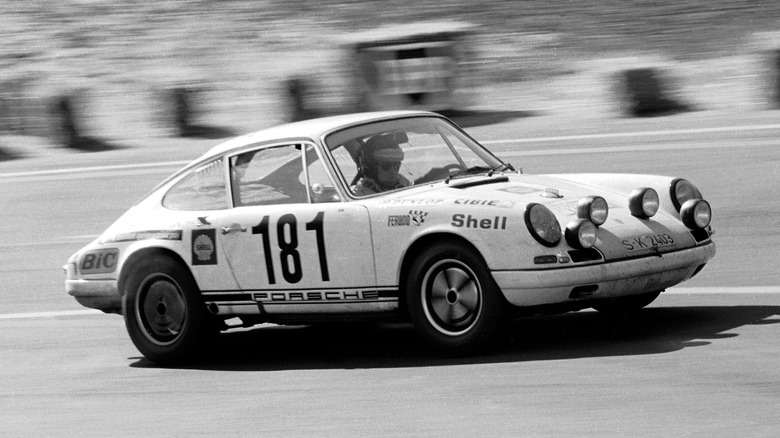
Porsche's back catalog isn't short on special edition cars, some of which are tributes to earlier, legendary models in the brand's history. The 911 R that was unveiled in 2016 is one of those tribute models, having been built to pay homage to the original 911 R of the late '60s. The first 911 R was built as a competition-spec variant of the 911, with a stripped-out interior and lightweight components to improve its power-to-weight ratio significantly compared to the standard road car. Porsche's dedication to shaving weight off the car was meticulous, with even the windshield using thinner glass than normal.
Four prototype examples of the car were built in 1966, with a further 15 examples built for customers and four for Porsche's in-house race division the following year. These customer cars were very expensive, costing around double the price of a standard 911. Even though it was custom-built for competition, the 911 R saw relatively little racing action, since it wasn't produced in high enough numbers to meet homologation rules for any major category. However, it did manage a first place finish at the 1969 Tour de France Automobile.
Porsche 911 (964) Turbo S Leichtbau
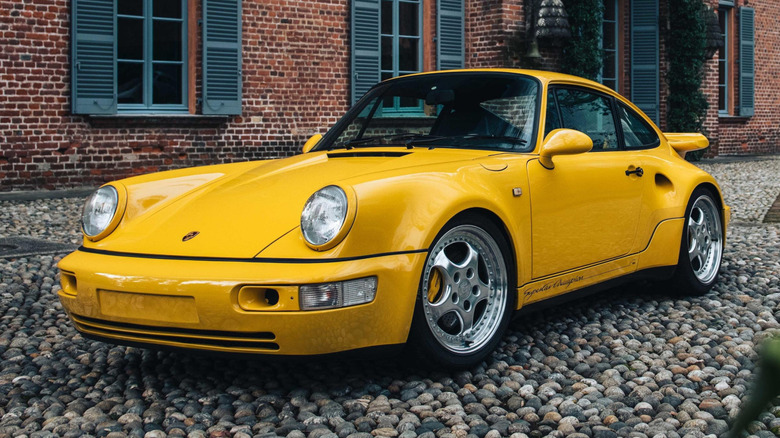
The Turbo moniker has become such an integral part of the identity of Porsche's modern lineup that it even appears on some models that don't have a turbocharger, like the Taycan Turbo S. Primarily, enthusiasts have the success of the original 911 Turbo of the '70s to thank for that, but rare collectors' grails like the 964 Turbo S Leichtbau have also helped add to the Turbo legacy. Launched as a 1993 model, the Turbo S Leichtbau was another of Porsche's lightweight cars, this time developed as a road-oriented supercar rather than a competition-ready race car.
It's thought that 86 examples were built, although the exact production numbers aren't confirmed. Originally, the car was planned to be even rarer, with less than 50 models initially planned, but high demand from buyers saw the original run increased. As well as stripping virtually every non-essential part from the car, Porsche also kept the car's weight as low as possible by using carbon fiber and aluminum for certain components.
In the end, the car weighed almost 400 pounds less than a standard 911 Turbo, while offering 61 additional horsepower. Unsurprisingly, such a special car continues to be sought after by the wealthiest Porsche collectors, with the pictured example selling at a Bonhams auction for over $1 million in 2023.
Porsche 963 RSP
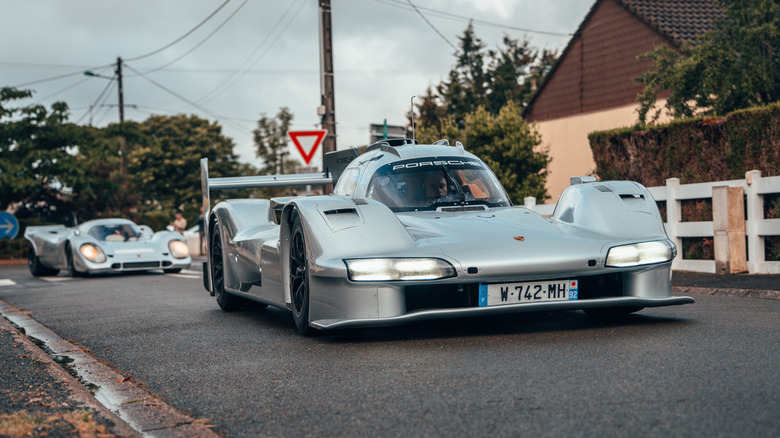
As well as making low-volume production models, Porsche also has a long history of making one-offs. In June 2025, the brand unveiled its latest effort, the Porsche 963 RSP, based on its 963 Hypercar racing prototype. The 963 competes in both the World Endurance Championship and in the IMSA Championship, and has seen success in both. It was built as a tribute to the Count Rossi 917, a one-off version of the 917 race car that was built for use on public roads.
In order to make the 963 meet legal requirements for road homologation, it needed a thorough overhaul. The 963 RSP features a raised ride height compared to the race car, and softer suspension to deal with rutted roads. The car also needed to accommodate road-legal tires, which meant that changes had to be made to the wheel arch design, and the headlights had to be altered to meet road height requirements. Porsche even fitted the car with a horn, since French road rules required one.
The one-off car appeared at the 2025 running of the 24 Hours of Le Mans alongside the original Count Rossi 917, but it's since been transported to the Porsche Museum in Stuttgart, Germany, with no future plans announced for road use. Unfortunately for deep-pocketed Porsche enthusiasts, the brand hasn't unveiled any plans to launch customer versions of the car to date, with the one-off remaining under factory ownership.
Want the latest in tech and auto trends? Subscribe to our free newsletter for the latest headlines, expert guides, and how-to tips, one email at a time.
Read the original article on SlashGear.












